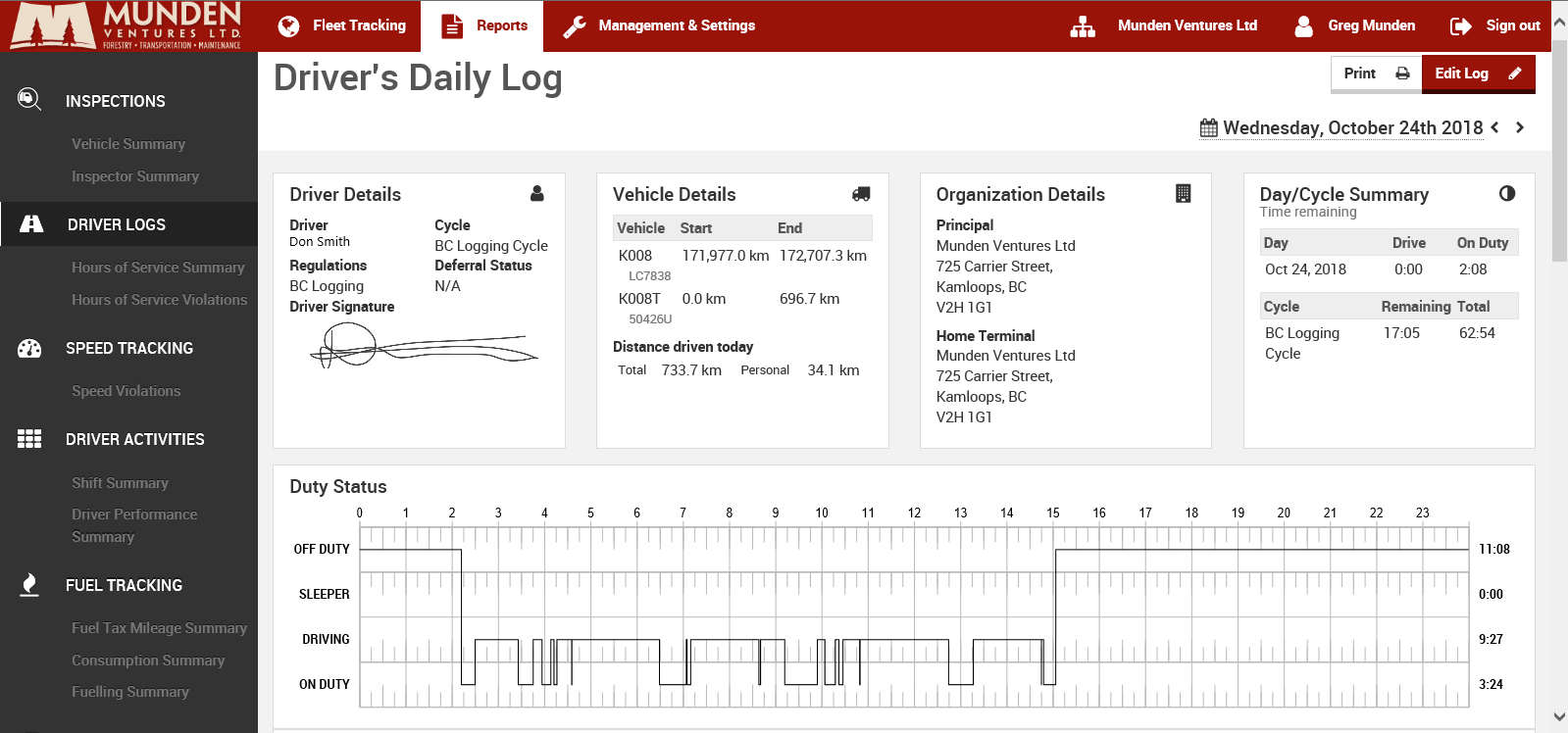 With the apparent impending passing of regulation mandating the use of Electronic Logging Devices (ELD’s) in early 2020 in Canada, many Canadian trucking companies are only just now beginning to search out solutions to comply. Fortunately, or unfortunately, depending on your perspective, the market place is full of solution providers.
With the apparent impending passing of regulation mandating the use of Electronic Logging Devices (ELD’s) in early 2020 in Canada, many Canadian trucking companies are only just now beginning to search out solutions to comply. Fortunately, or unfortunately, depending on your perspective, the market place is full of solution providers.
This blog is intended to the relay our experience of implementing ELD’s in a small Canadian trucking company. It is an unbiased set of suggestions and lessons learned (sometimes the hard way) about what you might want to consider when going through the process of ELOG implementation.
Included in this Blog will be access to our suggestions for:
Part 1 - ELOGs versus EOBRs - what's the difference?
Part 2 - Operational realities (and opportunities) of moving to ELOGs.
Part 3 - Finding a software and hardware supplier;
Part 4 - Implementation and Driver buy-in;
Part 5 - Harnessing the Power of an ELOG/Telematics System
Part 6 - Telematics Features and Capabilities
Part 2 - Operational Realities (and Opportunities) of Moving to ELOGs
There are some operational realities of moving to an ELOG system that every company needs to consider and plan for. The most fundamental question you need to ask yourself is, "Does my business currently operate within the hours of service regulations?" Of course you do! No, really, you need to sit down and look at your runs and the current practices of your drivers and dispatchers and determine if you comply.
The fundamental reason for introduction of ELOGs is to improve industry safety by having a higher level of comfort that trucking companies and their drivers are working a "reasonable" number of hours each day, without the ability to cheat the system. The fact is, once you make the switch to ELOGs, the opportunity for your driver to falsify his logbook goes way down. For instance, systems will be required to automatically place drivers "on-duty, driving" when the embedded GPS system in the device senses that the vehicle is moving a certain speed for a specified minimum length of time. Same thing for recording locations - all automatic now. Things like unit odometer readings, unit #'s, etc. will all be pulled automatically from the truck's ECM.

While this may cause you to be twitching in your seat a little, it's important for you to know that there are also a whole bunch of positives that come with this. There will be no more tickets received for "clerical" or form errors - like the driver forgot to include some information on his logbook. Your drivers' logbook will always be complete, will always be up-to-date, and will always be legible. On the back end, your safety manager or dispatch team can stop reviewing all logbooks, and just review the exceptions - which good ELOG systems should automatically identify. For instance, if a driver exceeds his hours of service, your system should flag this logbook day only, and identify the regulation that the driver is out-of-compliance on (for example - Failed to take the required time off-duty before continuing).
Now, if as a trucking company owner you are anything like me, this gives me great comfort in knowing that my drivers are always in compliance and their logbooks are accurate; or, if one goes out of compliance, it is brought to your attention to be dealt with rather than relying on someone thumbing through hundreds of logbook pages to try to determine compliance. Much better for you to be aware and take steps to prevent this in the future than await the CVSE auditor to pull up and start uncovering issues.
Okay, so step 1 is to start looking with a critical eye at your current level of compliance. If you find that you aren't in compliance, now is the time to start making changes to your operation to make sure you can continue to operate successfully in an ELOG environment. Many industry colleagues that I know that have taken this step have had to make changes where it became obvious that certain runs just are not possible given the hours of service requirements. This has lead to operational changes, and often meant some serious conversations with shippers who have, up to this point, had unreasonable expectations for deliveries. One thing is for sure, in an ELOG environment, if you can't do it there won't be anyone else who can legally either - the proverbial "leveling of the playing field" the has been the talk of the industry for decades.
If you found what you’ve just read to be valuable, then I’m sure you’ll enjoy reading the other five parts of this blog series. You can fill out the simple form below and I’ll be happy to email you a PDF of all 6 parts of this series.
Our journey to implement electronic logbooks in all our trucks was not without its ups and downs. Certainly, the most challenging part was getting all our drivers to embrace and use the new technology. If you want to have a chat sometime about how we went about getting buy in from all our drivers feel free to give me a call at 250.828.2821 or drop me an email gmunden@mundentrucking.ca.
All the best, Greg Munden.


 The latest happenings and news from Munden Ventures LTD.
The latest happenings and news from Munden Ventures LTD.